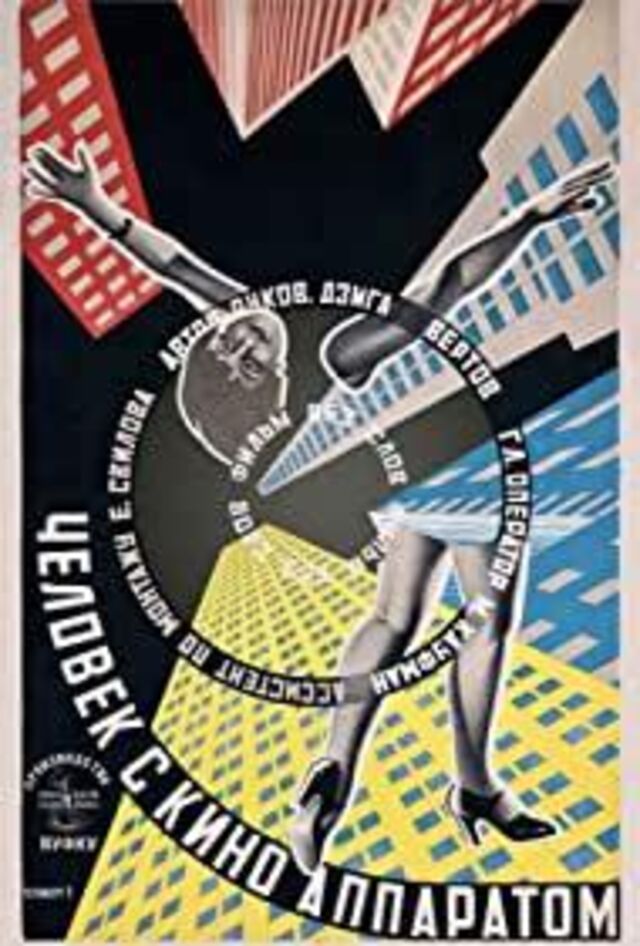Gross worldwide
$3,959

Gross worldwide
$3,959
Movie reviews
( 65 )
Add reviews
By Lottie 2022-12-29 17:11:43
2019/01/14 I watched a movie today
Ten stars.
The transmission of voyeurism.
original sound of sudden advent: a realization of “oh this is film not reality!”
Background music is also manipulating and coordinating with the plot: consider experimental films about an opposite/irrelevant BGM with certain definite scenes.
We are too used to film language: knows too well of what to expect. And the directors know this fact. The director plays the manipulator, and the audience obeys the manipulation without...
By Jane 2022-12-23 09:22:58
We are the bystanders, we are the characters
Learned a very interesting theory -
"movie eye" (Kino-eye).
He advocates comparing the film camera to "the eyes that catch life unexpectedly", that is, the creative concept of "I observe" + "I think". Djiga Vertov's "The Man with the Camera" makes this theory vividly displayed.
From the beginning of the movie when the audience was seated, we seemed to have fallen into the bizarre trap that the director carefully planned early in the morning. The film records an...
By Angelita 2022-12-21 18:10:21
The camera as the carrier in the film has accumulated tremendous power, recording the real eyes of the world, and conveying the director's thinking through images. This is not a story, but a review of daily life. The fast-paced movement has a strong sense of jumping in the picture, but it is not a story. Does not give a feeling of stuffing. Everyone's joys, sorrows and sorrows are exposed in front of the camera exactly and directly, and there is no time to hide them, and...
By Rickey 2022-12-21 02:09:31
Vertov's "The Man with the Camera" was technologically trend-setting in its day, so I don't think it's pointless to dwell on the content. In fact, I didn't read the emotional thoughts of the film director from it. This film is dazzling, putting all kinds of new technologies in and combining them together.
Professor Deng Qiyao commented on "The Man with the Camera": "The film eye once became a powerful tool for avant-garde writers to subvert the previous visual experience." The mechanical...
By Annetta 2022-12-20 20:22:51
"The person with the camera" is a scheme in which the subject of the film is absolutely the same as the director, because she absolutely uses the real material from her own perspective. We see the huge potential of "mechanical eyes". The mechanical eye has encountered many problems at the same time, it is so unnatural, it is definitely not an accessory of a person. When encountering such a peculiar person, the observed will never remain indifferent. Mechanical eyes are omniscient. The...
User comments
( 36 )
Add comments
By Lorine 2023-09-21 19:42:37
Fragmented shots aimed at different subjects convey unrelated and fragmented information, and the dramatic story will naturally not exist. Fragmented shots are edited together in different ways to generate secondary information and convey emotions. An examination of the basic workings of video, it is not only a treasure trove of film editing techniques, but also a precious record of life in the big cities of the Soviet Union in the late 1920s. The camera dance made in freeze frame is the most...
By Earl 2023-09-20 05:54:40
There is no script, all the scenes are taken from everyday social life. Vertov intends to break away from literary and dramatic influences in order to establish the language of cinema itself. In the play we can see the analogy of the cross-cutting of the shutters of opening and closing with the blink of an eye; the juxtaposition of the opposite themes of birth and death, marriage and divorce; slow motion to express the graceful posture of athletes; Accelerated editing, culminating in a...
By Jovani 2023-09-06 10:45:15
cool! ! It is unbelievable that these elements appeared in the era of electronic post-rock military noise bigband 20 in the soundtrack...
By Carli 2023-08-22 18:32:27
Montage, my beautiful...
By Chanelle 2023-07-30 06:52:25
8/10. Based on the associative form of the eye as the camera, Vertov vigorously demonstrates the power of editing and special effects to manipulate reality: the slanted frame splits the two street scenes and re-juxtaposes them, the camera pans frantically to capture different angles of the city, and the interior of the machine is full of The moving parts work, the blinking eyes, and the street cars and rails assembled by several rotations are quickly edited together to create a flickering...